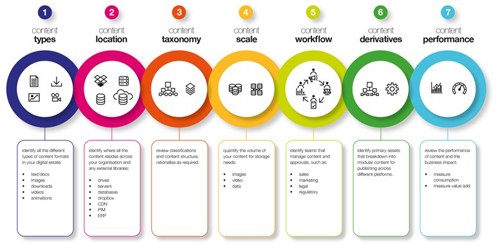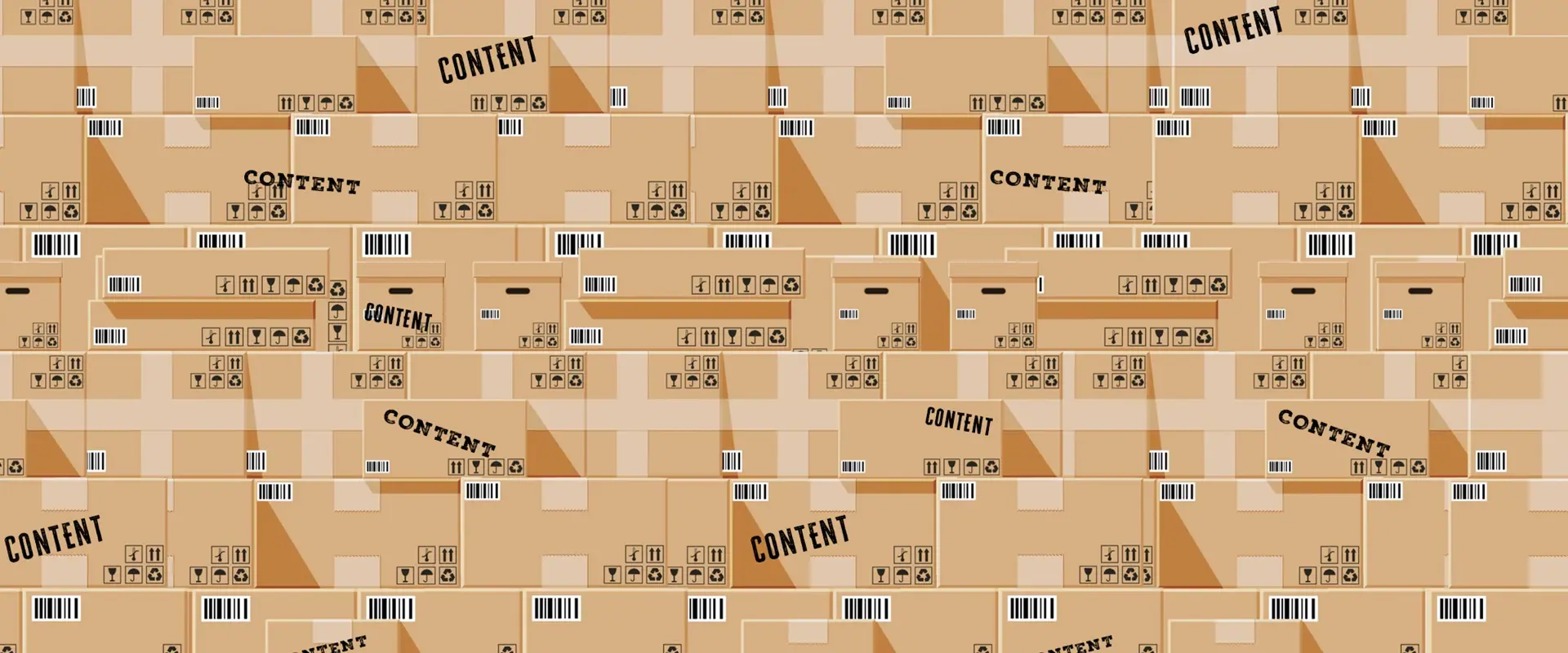bd2 / insights / The 7 pillars of content organisation
The 7 pillars of content organisation
At some point during the website scoping process, the subject of content arises and we always advise that the collation, rationalisation and creation of a client’s content can run concurrently to the design and development process. We often refer to a property building analogy because, whilst we’re undertaking the roles of architect, quantity surveyor and contractor, the occupants can start to think about what furniture they’re going to put in what rooms. Ideally, content will have been consolidated and be ready to be uploaded into the CMS as soon as it’s built and tested to speed up time to go-live.
Depending on the size of the organisation, the volumes of data and what systems it may already have in place, the scale of this task can vary enormously. Furthermore it may highlight a need to edit, rewrite or create new content where it either doesn’t exist or is no longer fit for purpose. Typically, in a mature or large organisation, there is an abundance of content but there often are many versions and it can reside in many places. For example, the company overview probably appears on the existing website, in Powerpoints or presentations and in documents, and each of these may be different versions of the same story. We would advise that all of them are gathered together, reviewed and edited into a single optimised version, this may require a complete rewrite of course but the existing content will inform this. The same principle applies to imagery, start by collating all the photography and video that exists, review it, re-use any of value or commission new where it no longer reflects the business or if it’s not compatible with the new site’s design ethos.
We’ve put together the 7 pillars of content organisation as a guide to all the steps that should be undertaken or at least considered as part of this process:

1. Start by identifying all the different types of content that exist within your digital estate such as documents [Word, PDF], images [photography, infographics, diagrams, illustrations], downloads [Docs, CADs, Revits, Specs, high-res images, technical drawings etc], videos [on premise, Youtube, Vimeo] and any other formats like animation or motion graphics.
2. As part of this exercise, the location of all this content will need to be verified. Again, depending on the size of an organisation and the systems employed, this can be a straightforward or involved exercise. Where there is a lack of formal systems, this may drill down to individual hard drives but hopefully there are at least local servers where files are held, but these may be large or numerous. Many businesses use Dropbox to store assets, and if these have been well curated searching should be relatively simple and where systems such as PIM servers and ERP solutions have been implemented, the process of adding data into a CMS can be automated.
3. Content classifications and structure are very important especially with product catalogues and e-commerce, so it’s vital that this is consistent in format and use.
4. Quantifying the scale of content will be an outcome of the rationalisation process but it’s essential to ensure the hosting requirements are adequate for the volume of data it needs to store.
5. Content workflow can implicate several teams or roles within an organisation and potentially third party content creators or agencies. Mapping workflows is an important part of managing content which could be instigated by sales, such as collateral needed for a new product, this is created by marketing potentially with the agency, this may need to be approved by legal or even a regulatory body, for example the MHRA with pharmaceuticals.
6. Primary content assets may be broken down into modular content for publication within different platforms or channels. Typically a long form article is edited into smaller versions for use in news summaries and posts for social media.
7. All content should be reviewed for performance, there’s no point in putting it on the website if no one looks at it. Measuring consumption [hits and page views] is important, but the value add of downloads, likes and shares is critical.
The content gathering exercise is a great opportunity to consolidate, review, enhance, replace or create content accordingly. It’s also good practice to review the analytics and consider its effectiveness - what works well? What attracts users? What gains engagement? What drives enquiries? What generates leads? The answers to these questions will bring focus to the content organisation process.
